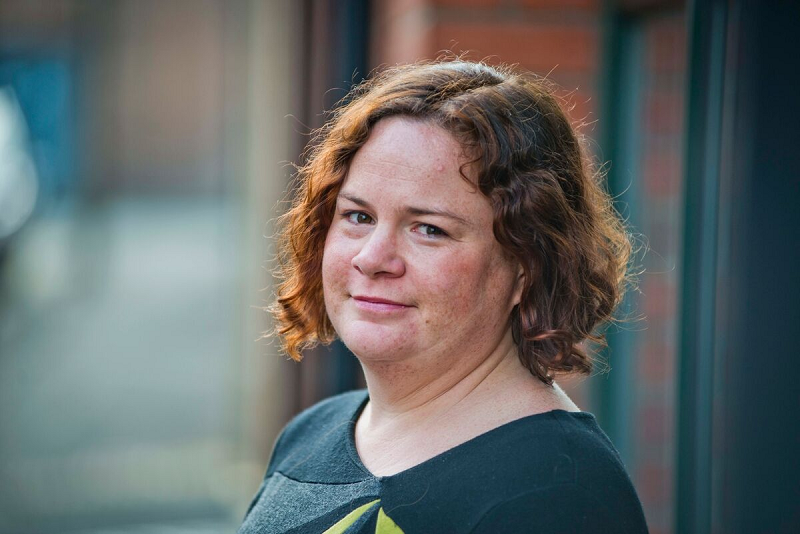Tammy Swift-Adams: Life after the Planning Bill – moving from conflict to collaboration
The new Planning Bill gives Scotland just what it needs: a spur to replace conflict with collaboration.

Tammy Swift-Adams
To make a success of the new system, councils will need to work positively and constructively with their delivery partners (home builders included) and talk to more people in each community, including young people.
The Bill is not a developer’s charter, nor is it rooted in populism. Most powers and duties stay with Scotland’s planning authorities but the Bill is clear on what they are entrusted to deliver in return. Homes are top of the list.
It is very heartening to see this unprecedented focus on ensuring that planning changes to become an enabler of increased home building.
And there are real opportunities for it to become a more successful delivery tool. A “purpose of planning” will guide Scottish Ministers and planning authorities to serve the “long-term public interest”. The National Planning Framework will commit Scottish Ministers and each part of Scotland to evidence-based targets for home building. Each planning authority must demonstrate those homes can be delivered.
This last point is vital as it directly addresses one of the biggest barriers to fixing Scotland’s housing crisis. For the first time ever, primary legislation is explicit that all Local Development Plans must facilitate the delivery of enough new homes.
This should bring an end to the current anomaly that lets a council adopt its Local Development Plan even where it has been proven to have no realistic hope of delivering on its housing targets. This has undermined the plan-led system and the Scottish Government is to be commended for addressing this.
It is in the gift of every planning authority to avoid such an outcome and ensure that by the time they consult on a Proposed Plan, and certainly by the time it is examined, they can demonstrate with confidence that it will result in enough new homes being built locally in the coming decade. The information they need to succeed in this is available through Homes for Scotland and our members, making us an obvious early port of call for positive collaboration in the new evidence gathering / gate-check stage of planning. We would warmly welcome such approaches.
These changes are good news for those priced out of home ownership and the private rental market by the current surfeit of planning restrictions – restrictions which a recent Centre for Cities report showed are worsening wealth inequalities.
It is also good for communities who want to rely on development plans to prepare them for how their local area is likely to change over the coming decade – and the infrastructure and utility providers who need to know what to do, where and when, to support housing delivery.
The new provisions on housing have been hard won by Homes for Scotland and others through positive engagement, provision of evidence and practical experience, letter writing and good old-fashioned face to face discussion.
There has been much debate on what makes for a fair planning system. For me personally, it is one which delivers what is needed in the long-term public interest – not one in which public opinion, aversion to change or the preservation of property values holds sway.
There are huge opportunities for people and organisations to get together early on in the planning process (before any new regulations and guidance try to tell us how) and discuss openly how to make a reformed planning system work for all parts of Scotland. For starters, let’s have some early, roundtable talks about Regional Spatial Strategies to discuss how these more flexible tools might better equip planning authorities to work in symbiosis with other strategic initiatives – like city deals and economic strategies. How might producing them (and Local Development Plans) in a collegiate way increase the benefits that flow from sustainable economic growth?
Collaboration is an easy concept to grasp. The OED explains it simply: “work jointly on an activity or project”. That means local politicians asking their electorates for help with the difficult task of looking to the future and preparing ahead of time for the new things that will be needed (including new homes). It means working with home builders to see what they could achieve if plans were better aligned with the market conditions in which they have to operate. It means opening-up real opportunities to deliver enough homes now and in the long-term, whilst being clear that each development must contribute to the public good.
If a newly collegiate approach isn’t embraced, we will continue to get what we have always got. Conflict and too few homes. Instead, lets grasp what the Bill aims to achieve, and ensure Scotland becomes home to the “world class planning system” the Planning Minister Kevin Stewart envisages, delivering good, attainable homes for all who need them.
- Tammy Swift-Adams is director of planning at Homes for Scotland









